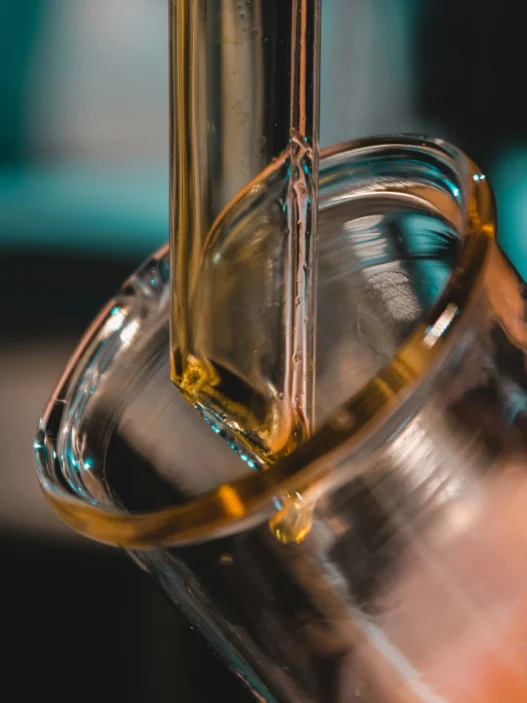3,5-Dichlorosalicylic acid is a compound that finds its relevance in everyday life through its utility in various industries. This chemical is commonly used in the pharmaceutical industry for the synthesis of medications, as well as in the production of dyes and other chemical products. Additionally, 3,5-Dichlorosalicylic acid plays a role in research and development, serving as a key building block in the creation of new materials and substances. Its versatility and applications make it a significant component in the daily lives of individuals, albeit often unseen.
Table of Contents:
- 💡 Commercial Applications
- ⚗️ Chemical & Physical Properties
- 🏭 Production & Procurement
- ⚠️ Safety Considerations
- 🔬 Potential Research Directions
- 🧪 Related Compounds
💡 Commercial Applications
3,5-Dichlorosalicylic acid, a compound derived from salicylic acid, finds various applications in the commercial and industrial sectors. It is commonly used as an intermediate in the production of certain dyes, pigments, and pharmaceuticals due to its chemical properties. Additionally, it is utilized in the synthesis of agrochemicals, pharmaceuticals, and other specialty chemicals.
In the realm of drug and medication applications, 3,5-Dichlorosalicylic acid plays a significant role in the pharmaceutical industry. It is employed as a building block in the synthesis of various drugs, such as antiseptics, antimicrobials, and anti-inflammatory agents. Its versatility and reactivity make it a valuable component in the development of new pharmaceutical compounds with potential therapeutic benefits.
Furthermore, 3,5-Dichlorosalicylic acid has been explored for its potential use in the treatment of certain skin conditions, such as acne and psoriasis. Its anti-inflammatory properties and ability to regulate keratinocyte proliferation make it a promising candidate for topical formulations aimed at addressing these dermatological concerns. Ongoing research continues to investigate the full range of applications for this compound in the pharmaceutical and cosmetic industries.
⚗️ Chemical & Physical Properties
3,5-Dichlorosalicylic acid is a white to off-white crystalline solid with no distinct odor. It is generally considered to be odorless.
With a molar mass of 217.04 g/mol and a density of 1.63 g/cm³, 3,5-Dichlorosalicylic acid falls within the range of molar mass and density of common food items such as sugars and salts.
3,5-Dichlorosalicylic acid has a melting point of approximately 220-222°C and a boiling point of 488°C. These values are significantly higher compared to common food items, which typically have lower melting and boiling points.
In terms of solubility in water, 3,5-Dichlorosalicylic acid is sparingly soluble, and it has a moderate viscosity. These properties make it less soluble in water and more viscous than common food items like sugar and salt.
🏭 Production & Procurement
3,5-Dichlorosalicylic acid is typically produced through a multi-step chemical synthesis process. Initially, salicylic acid is chlorinated to form 5-chlorosalicylic acid. Subsequently, this compound is further chlorinated at the 3-position to yield the final product, 3,5-Dichlorosalicylic acid.
This compound can be procured from various chemical suppliers and manufacturers. It is typically available in solid form, either as a powder or crystalline substance. 3,5-Dichlorosalicylic acid can be transported in sealed containers to prevent contamination and degradation during transit.
When procuring and transporting 3,5-Dichlorosalicylic acid, it is essential to adhere to proper safety measures and regulations. This compound should be handled with care, as it may pose health hazards if not managed properly. Additionally, proper labeling and documentation should accompany the shipment to ensure compliance with transportation regulations.
⚠️ Safety Considerations
Safety considerations for 3,5-Dichlorosalicylic acid should be taken seriously due to its potential hazards. It is important to handle this chemical with care and caution to avoid any accidents or harm. Proper personal protective equipment should be worn when working with 3,5-Dichlorosalicylic acid, such as gloves, goggles, and lab coats.
Hazard statements for 3,5-Dichlorosalicylic acid include “Causes skin irritation,” “Causes serious eye damage,” and “May cause respiratory irritation.” These statements highlight the potential dangers associated with this chemical and emphasize the importance of following proper safety protocols when handling it. It is crucial to take necessary precautions to avoid any adverse effects on health and safety.
Precautionary statements for 3,5-Dichlorosalicylic acid include “Wear protective gloves/eye protection/face protection,” “IF ON SKIN: Wash with plenty of soap and water,” and “IF INHALED: Remove person to fresh air and keep comfortable for breathing.” These statements provide guidelines for safe handling, storage, and disposal of the chemical to minimize any risks or health hazards. It is essential to adhere to these precautions to ensure the well-being of individuals working with 3,5-Dichlorosalicylic acid.
🔬 Potential Research Directions
One potential research direction for 3,5-Dichlorosalicylic acid is its use as a precursor in the synthesis of various pharmaceutical compounds due to its versatile chemical properties and potential pharmacological activities.
Another potential area of study lies in exploring the environmental impact of 3,5-Dichlorosalicylic acid, particularly its degradation pathways and potential toxicity to aquatic organisms, which could contribute to a better understanding of its fate in the environment.
Furthermore, investigating the potential therapeutic applications of 3,5-Dichlorosalicylic acid in the treatment of various diseases, such as cancer or inflammatory disorders, could lead to the development of novel drugs with improved efficacy and reduced side effects.
🧪 Related Compounds
One similar compound to 3,5-Dichlorosalicylic acid is 5-Bromosalicylic acid. This compound has a molecular structure that is closely related to 3,5-Dichlorosalicylic acid, with the substitution of two chlorine atoms with two bromine atoms on the aromatic ring. This substitution results in slight variations in physical and chemical properties compared to the parent compound.
Another similar compound is 3,5-Dibromosalicylic acid. This compound shares the same core structure as 3,5-Dichlorosalicylic acid but with the substitution of chlorine atoms with bromine atoms on the aromatic ring. The difference in electronegativity between chlorine and bromine atoms may result in differing reactivity profiles and solubility properties for 3,5-Dibromosalicylic acid compared to 3,5-Dichlorosalicylic acid.
Additionally, 3,4-Dichlorosalicylic acid is a related compound to 3,5-Dichlorosalicylic acid. This compound differs in the position of the chlorine atoms on the aromatic ring, with one chlorine atom at the 3-position and the other at the 4-position. Despite the structural similarity, this positional isomer may exhibit different biological or chemical activities due to differences in steric hindrance or electronic effects.





